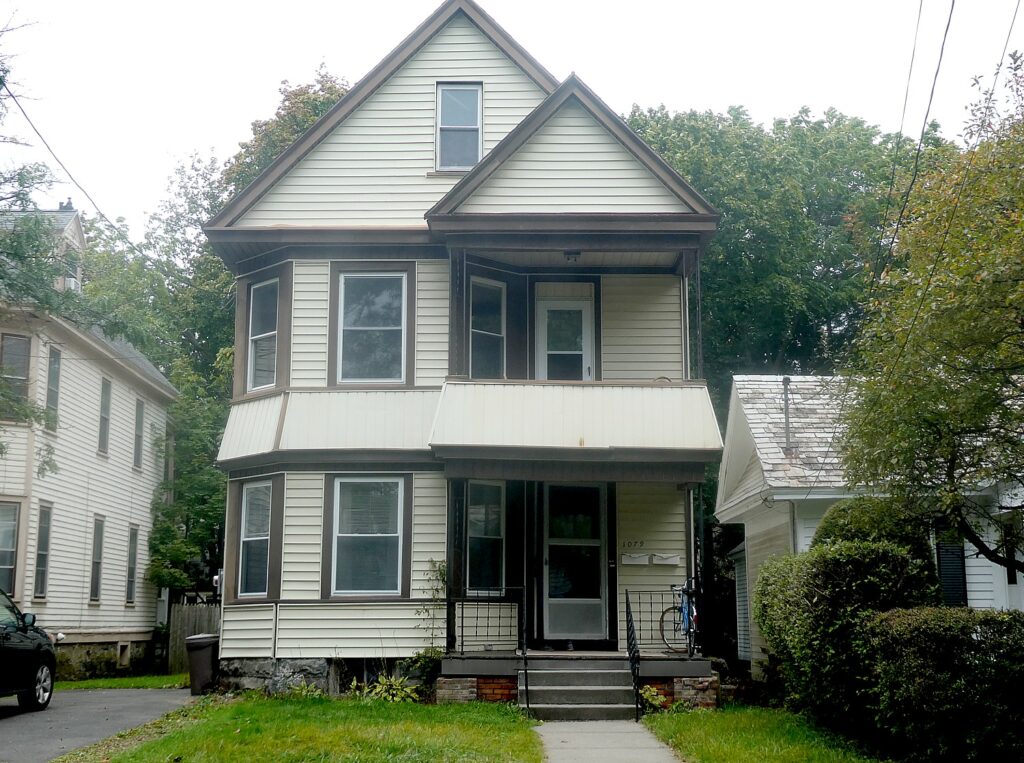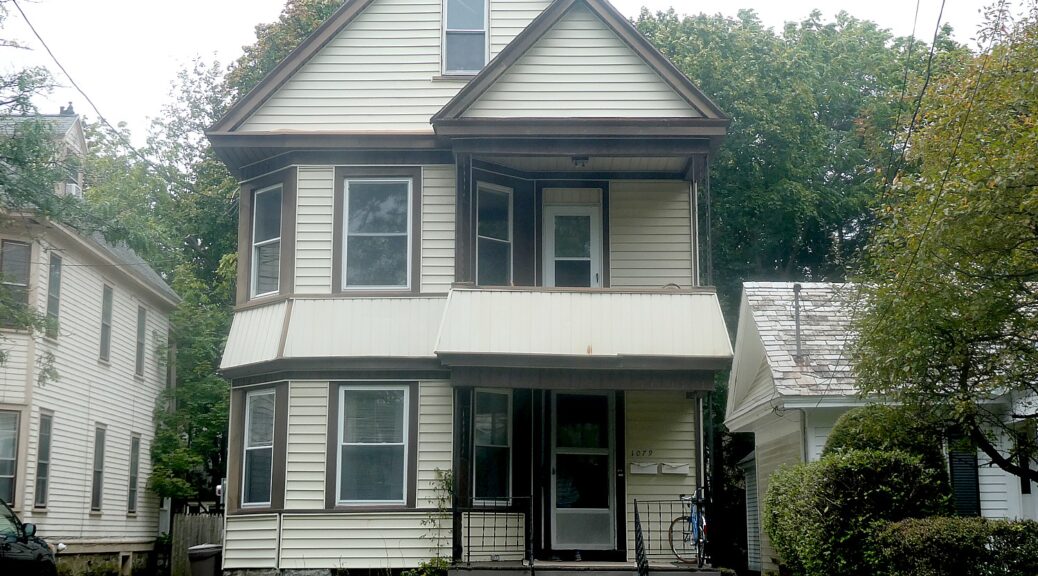Launches first-of-its-kind program to address land use and zoning barriers that limit housing

President Biden’s economic vision is about building an economy from the middle out and bottom up, not the top down— that’s Bidenomics. A critical foundation of that vision, and the central goal of the Biden-Harris Administration’s Housing Supply Action Plan, is an economy where everyone has access to a safe and affordable home. That vision means lowering costs, including by building and preserving more housing, particularly for lower- and middle-income households. Today’s announcements will lower housing costs by tackling challenges that have stifled affordable housing for decades, as well as seizing immediate opportunities:
- Reducing barriers to build housing like restrictive and costly land use and zoning rules;
- Expanding financing for affordable, energy efficient and resilient housing; and
- Promoting commercial-to-residential conversion opportunities, particularly for affordable and zero emissions housing.
Recent data show that inflation in rental markets is decelerating and more apartments are on track to be built this year than any year on record. The Administration’s actions are directly leading to the creation of tens of thousands of affordable housing units. For example, jurisdictions participating in the American Rescue Plan’s (ARP) HOME program will produce at least 20,000 units of affordable housing and support an additional 23,000 households with rental assistance, non-congregate shelter, or supportive services. Treasury recently announced that communities across the country will use ARP State and Local Fiscal Recovery Fund funds for 2,500 separate projects and developments to meet housing needs and combat homelessness. And since the Administration’s restart of the Federal Financing Bank’s Risk Sharing program, almost 12,000 rental homes have been created or preserved.
Today’s actions further build on the Biden-Harris Administration’s Housing Supply Action Plan and updates announced last fall, and are a down payment on the historic housing investments proposed in the President’s Budget that would boost supply, lower costs and cut dangerous climate pollution, promote homeownership, protect renters, and promote fair housing. They also complement the actions by the Biden-Harris Administration in just the last week, including a crackdown on junk fees in the rental housing market, and new steps announced today that build on its Blueprint for a Renters Bill of Rights.
Reducing Barriers to Build Housing Like Restrictive and Costly Land Use and Zoning Rules
Local land use laws and zoning regulations limit where, and how densely, housing can be built. This constrains housing supply, perpetuates historical patterns of segregation, prevents workers from accessing jobs, and increases energy costs and climate risk. Today, the Biden-Harris Administration is announcing new actions to fund jurisdictions committed to removing barriers that restrict housing production and preservation, including by:
Announcing the Department of Housing and Urban Development’s (HUD) Pathways to Removing Obstacles to Housing (PRO Housing) program. Restrictive local land use rules slow down housing production, or prohibit housing being developed at all, which increases the costs to rent or purchase a home. Such restrictive rules are often also inconsistent with fair housing principles. This first-of-its-kind $85 million federal program will provide communities with funding to identify and remove barriers to affordable housing production and preservation. HUD will award grants of up to $10 million to jurisdictions that have an acute demand for affordable housing and are working to identify, address, or remove barriers to housing production and preservation. Funding can be used for planning and policy activities to allow for higher-density zoning and rezoning for multifamily and mixed-use housing, streamlining affordable housing development, and reducing requirements related to parking and other land use restrictions. Funding can also be used for infrastructure activities necessary for the development or preservation of housing.
Reducing land-use restrictions and improving transportation access to housing. Earlier this month, the Department of Transportation announced its Reconnecting Communities and Neighborhoods (RCN) program, which will provide up to $3.16 billion for planning and capital construction projects that prioritize disadvantaged communities and improve access to daily destinations. This includes improving connections to affordable housing, fostering equitable development, and increasing housing supply through zoning reform. RCN includes a $450 million Regional Partnership Challenge that will incentivize stronger regional partnerships to tackle persistent equitable access and mobility challenges, with land use reform as a key priority.
Encouraging the improvement of land use in Economic Development Administration grant programs. The Economic Development Administration (EDA) updated its “Investment Priorities” that guide the agency’s grantmaking to include an emphasis on efficient land use, where commercial uses, economic activity, and employment opportunities are concentrated and accessible to nearby residential density. Moving forward, EDA will more explicitly incentivize projects that include an emphasis on density in the vicinity of the project – which can in turn encourage greater housing supply and allow people to live closer to work and services they need.
Expanding Financing to Create and Repair Affordable, Energy Efficient and Climate Resilient Housing
Gaps in access to financing, along with the complexity of mixing funding sources, limit the production or preservation of affordable housing. The Biden-Harris Administration is taking the following actions to expand financing for affordable, energy efficient, and climate resilient housing going forward:
Providing new financing for affordable, energy efficient, climate resilient housing and clean energy investments. This month, the Environmental Protection Agency (EPA) announced its $27 billion Greenhouse Gas Reduction Fund (GGRF), which will mobilize private capital and provide financing for thousands of clean energy projects, including cost-saving retrofits of existing homes and buildings, construction of zero emissions buildings, and commercial to residential conversions, among others. Such investments will reduce pollution and lower utility costs. This announcement follows HUD’s announcement of its Green and Resilient Retrofit Program with over $830 million available in grants and loan subsidy, for loan commitments up to $4 billion, to modernize existing HUD-assisted affordable homes so they remain available for families into the future. The Department of Energy also released $90 million to advances efficiency and resilience through building codes, and HUD, FHA, and the United States Department of Agriculture proposed modernizing energy codes.
Making it easier to build and rehabilitate apartments with FHA-insured mortgages. HUD announced new guidelines that increase the dollar amount threshold at which a multifamily loan is considered a large loan and is subject to additional underwriting requirements from $75 million to $120 million. This change will simplify underwriting and reduce development costs for large multifamily properties financed with FHA-insured mortgages without presenting undue risk to FHA, significantly expanding commitments for affordable housing financing. HUD will review this large loan limit annually.
Streamlining financing for the creation of affordable housing. HUD announced that it will allow larger loans to participate in the agency’s Low Income Housing Tax Credit (LIHTC) Pilot Program, which increases the number of apartment sites eligible for a program that streamlines financing. HUD also updated guidelines to allow public housing authorities (PHAs) to more easily use housing vouchers and mixed-finance transactions to create or preserve housing.
Repairing and expanding affordable housing. HUD published new guidance for public housing authorities and multifamily housing owners participating in the Rental Assistance Demonstration, providing them with additional tools to repair and build deeply affordable housing. The guidance also promotes water- and energy-efficiency investments, and includes new requirements that address climate resilience, adopts stronger energy efficiency standards, and supports repairs to thousands of existing affordable units in the next three years.
Empowering homeowners to be part of the solution by increasing financing for onsite housing units. In April, FHA proposed updates that, if implemented, would make it easier to finance accessory dwelling units (ADUs), which are additional onsite housing units. Among the changes is the ability to include projected rental income from an ADU as part of the qualifying income when purchasing or refinancing a home. This added flexibility would expand opportunities for low- and moderate-income homeowners to benefit from the wealth-building potential of ADUs while increasing the stock of affordable housing.
Promoting Commercial-to-Residential Conversions
Across the country, commercial vacancies are affecting urban and regional economies. Commercial-to-residential conversion can counteract those effects, reenergize local economies, and add to the supply of housing. The adaptive reuse of these properties also presents an opportunity to create zero-emissions housing, which will reduce energy costs for residents and cut dangerous climate pollution. Recognizing that opportunity, the Biden-Harris Administration is launching a new commercial-to-residential conversion initiative that is:
Leveraging federal funding and other tools to support conversions. The White House will lead a new interagency working group to develop and advance federal funding opportunities that support the conversion of commercial properties to housing, and leverage climate-focused federal resources to create zero emissions and affordable units. For example, programs like HUD’s PRO Housing announced today, as well as investments from President Biden’s Inflation Reduction Act and Bipartisan Infrastructure Law, can be used for such conversions. As part of this initiative, the General Services Administration (GSA) will launch an effort to identify and market surplus federal properties that represent the best opportunities for commercial-to-residential conversions. Ongoing conversion projects from GSA dispositions are already producing over 1,000 new housing units. The initiative will continue to convene developers, municipalities, and other stakeholders to learn about opportunities and challenges.
Funding research that supports commercial to residential conversions. This week, HUD announced new funding to support research on office-to-residential conversions, including producing a new guide for state and local policymakers on how to make these projects more economically viable. Building on a public convening held this week on office-to-residential conversions, HUD will release a policy brief on this topic later this year.

